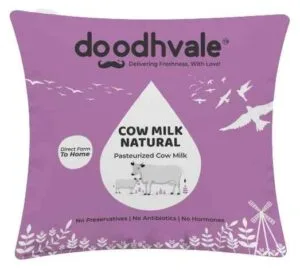
Milk is an essential part of many diets worldwide, offering a rich source of nutrients vital for growth, development, and overall health. In India and other parts of South Asia, both cow milk and buffalo milk are widely consumed, each with its own set of unique characteristics and benefits. This blog delves into the nutritional differences, health benefits, and culinary uses of cow milk vs buffalo milk to help you decide which might be better suited to your needs.
Nutritional Comparison
1. Protein Content
- Cow Milk: Contains about 3.2 grams of protein per 100 ml.
- Buffalo Milk: Higher in protein, offering approximately 4.5 grams per 100 ml.
2. Fat Content
- Cow Milk: Typically has a fat content of 3-4%, making it lighter and easier to digest.
- Buffalo Milk: Richer in fat, with a content of around 7-8%, giving it a creamier texture and richer taste.
3. Caloric Value
- Cow Milk: Lower in calories, with around 60-70 calories per 100 ml.
- Buffalo Milk: Higher in calories, offering about 100-110 calories per 100 ml.
4. Calcium and Minerals
- Cow Milk: Contains about 120 mg of calcium per 100 ml.
- Buffalo Milk: Higher in calcium, with approximately 210 mg per 100 ml.
5. Vitamins
- Cow Milk: Rich in vitamin B12 and riboflavin.
- Buffalo Milk: Higher in vitamins A and D due to its fat content.
Health Benefits
Cow Milk:
- Digestibility: Easier to digest due to lower fat content, making it suitable for children and the elderly.
- Heart Health: Lower fat content can be beneficial for those managing cholesterol levels.
- Hydration: Contains more water (about 87%), helping with hydration.
Buffalo Milk:
- Bone Health: Higher calcium content supports stronger bones and teeth.
- Muscle Growth: Rich in protein, making it ideal for muscle building and repair.
- Immune System: Higher in bioactive compounds and antioxidants that boost the immune system.
- Energy: Higher caloric content can provide more energy, beneficial for growing children and physically active individuals.
Culinary Uses
Cow Milk:
- Versatility: Preferred for drinking directly and in beverages like tea and coffee due to its lighter texture.
- Dairy Products: Commonly used in making butter, cheese, and yogurt with a milder flavor.
- Cooking: Ideal for recipes that require a lighter, less creamy texture.
Buffalo Milk:
- Dairy Products: Excellent for making rich and creamy dairy products such as mozzarella cheese, paneer, and traditional sweets like rasgulla and kulfi.
- Cooking: Suitable for recipes that benefit from a richer, creamier texture.
- Fermented Products: Produces thicker and creamier yogurt and curd.
Considerations for Lactose Intolerance
- Cow Milk: Some people with lactose intolerance may find cow milk easier to digest due to its lower lactose content.
- Buffalo Milk: Despite its higher lactose content, some individuals report better tolerance, potentially due to its higher enzyme content that aids digestion.
Environmental and Ethical Considerations
- Cow Milk: Cow farming has a significant environmental impact, including higher greenhouse gas emissions.
- Buffalo Milk: Buffalo farming is often more sustainable in certain regions, and buffaloes are typically better adapted to harsh climates, requiring fewer resources.
Conclusion
Both cow milk and buffalo milk have distinct nutritional profiles and benefits, making them suitable for different needs and preferences. Cow milk is lighter, easier to digest, and versatile, making it a good choice for daily consumption and those managing fat intake. Buffalo milk, with its richer taste and higher nutrient content, is ideal for making creamy dairy products and for those needing extra calories and protein.
Ultimately, the choice between cow milk and buffalo milk depends on your dietary requirements, health goals, and culinary preferences. Whether you prefer the lightness of cow milk or the richness of buffalo milk, both can be a nutritious part of a balanced diet.
